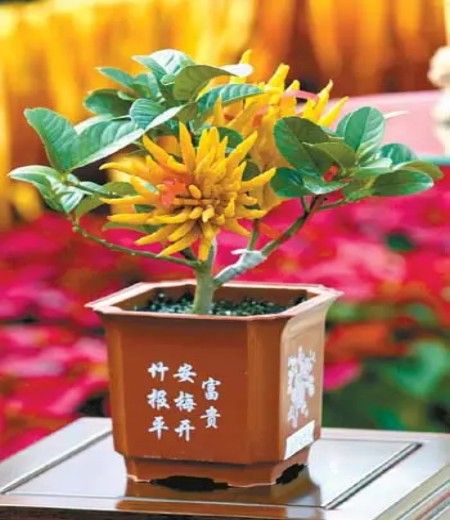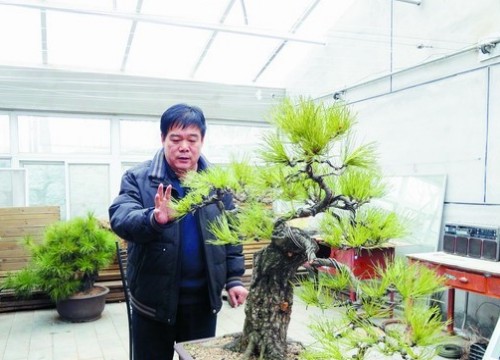"four taboos" in the production and maintenance of jungle bonsai
There is a special form of display in bonsai called jungle style, which skillfully matches mountains, stones and trees, showing the beauty of the jungle, just like a beautiful landscape painting, but jungle bonsai needs "four taboos" in the process of production and conservation.

One taboo and one size fits all:
The materials used in jungle bonsai are generally lobular shrubs, such as tiger thorn, sparrow, canary, June snow and so on. When potting these leafy tree species, we must choose the right size, and strive to change. In many tree stumps, we should not be similar in size and height, otherwise the landscape will be dull, lack of vitality, and no charming wild interest to speak of.
Second, the secret is not ventilated:
Several trees of jungle bonsai form a jungle, which is no better than a primeval forest, which will affect the ornamental effect if it is not ventilated. Several stumps should be advanced and retreated, bowed and conceded, so that the space is dense and changed, there is a compact place where needles cannot be inserted, and there is an open space for horse racing and boating. In this way, there will be ups and downs in the composition, and the resulting landscape will produce artistic charm.
Three taboos, deep basin and large dish:
Jungle-style bonsai should show the wild interest of the jungle and the wilderness scenery, so it is not suitable to choose deep pots and dishes. If the basin is deep, the tree appears small and the space shown is relatively narrow. On the other hand, when the basin is shallow, the tree is tall, and the space becomes relatively large, which gives people a more far-reaching visual effect. And the use of shallow pot planting, but also in the pile up the soil slope with stones, so that the foundation ups and downs, the picture is more lively.
Four taboos do not prune:
Jungle stump bonsai is often made up of several trees, and these trees not only have their own unique shape, but also have a harmonious relationship with each other, thus forming a complete composition. In addition, most of these small-leaf shrubs are fast-growing trees with strong sprouting ability. if they are not pruned for a long time, they often have horizontal branches and entanglement, and they have to spend a lot of energy on decoration, so only if they pay attention to pruning at any time can their ornamental value be guaranteed.
Time: 2019-05-23 Click:
- Prev

The ornamental value of bergamot bonsai
Bergamot, also known as five-finger mandarin, is generally about 1 meter high. It is evergreen all the year round, bluish yellow fruit color, intoxicating fragrance, now has become a valuable ornamental leaf potted flowers, is listed as a good product of interior decoration. Its fruit separates its carpels when it is ripe, forming slender, curved petals, shaped like fingers, hence the name bergamot.
- Next

Ten subjective consciousness tendencies should be abandoned in bonsai creation
The creation process of bonsai, because it is people's subjective consciousness acting on the objective entity, must run through a series of ideological activities. Under the conditions of the same region, economy and resources, there will be a large gap between different authors in terms of quality and the speed of progress. Among many factors
Related
- Fuxing push coffee new agricultural production and marketing class: lack of small-scale processing plants
- Jujube rice field leisure farm deep ploughing Yilan for five years to create a space for organic food and play
- Nongyu Farm-A trial of organic papaya for brave women with advanced technology
- Four points for attention in the prevention and control of diseases and insect pests of edible fungi
- How to add nutrient solution to Edible Fungi
- Is there any good way to control edible fungus mites?
- Open Inoculation Technology of Edible Fungi
- Is there any clever way to use fertilizer for edible fungus in winter?
- What agents are used to kill the pathogens of edible fungi in the mushroom shed?
- Rapid drying of Edible Fungi

